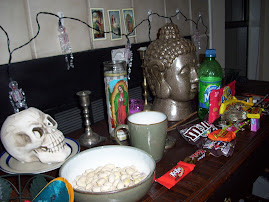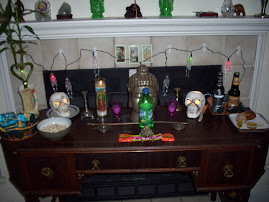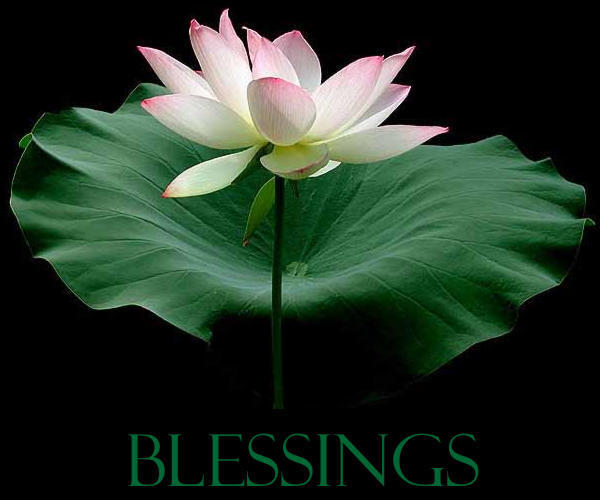Of all the Irish folktales of Henry Glassie, I felt that "The Man Who Had No Story," best captured the essence of fairytales I grew up reading. It embodied the fantasy and lack of time and space. In a moment of time, which in our western minds amounted to one night, Brian O' Braonachain became a jack of all trades and a master story teller. Times were tough back in the day, for "those were bad times--the English were in power and they wouldn't let the Irish earn a single penny in any way." Brian didn't know what else to do but venture into the "forbidden" fairy glen to cut rods to make his baskets. He didn't know that in one evening his life would forever be transformed by being transported to two houses to receive "training" in the trade of story telling. He was terribly frightened of being eveloped by the fog that surrounded him until he saw the light of a house, and thought, "where there is light there must be people." I feel the fog is a metaphor for the confusion the Irish must have felt during this suppressive time. The light of the house represents the light of wisdom coming from his learning experience, to guide him out of the darkness of the unknown. Of course, the unknown was the experience Brian needed to change the course of his life. He was given the confidence to access wisdom from within to do anything from being a a doctor to a priest. He emerged from his journey in the the morning to the exact place he started with "his head on the two bundles of rods," which he would ever cut again. The journey was the result of fairy magic, which represents divine intervention to allow life to change and transform.
The "King of Ireland's Son" was an interesting happily ever after the gore fairy tale. It was loaded with typical fairy tale elements, such as giants at every stopping point, and a little green leprechan man, who was essentially in control of the whole show. The typical children's fairy tale of our time does not elude to violence like this tale does. The little leprechan intimidates and scares the giants by telling them that he will be beheaded by his master who is an enormous giant himself. It's funny to me how the king of Ireland's son, who is not named or called a prince proper, wants to travel afar to the east to marry a blood thirsty woman. Its not about love and happily ever after necessarily, but rather contest and conquest, and adventure.
The "Birth of Finn MacCumhall" was somewhat of an epic of pain and suffering and tragedy that ends up in victory. This tale includes alot of gore and mayheim and seems relentlessly barbaric to me. This is the price to pay for triumph in the end, for Finn ends up with the King's reverence and respect and inherits the Dunn.
Significant, in all these tales, is events themselves alude to the passing of time, rather than increments of time, such as minute, hour, days, and years. Night to Dawn seems to be the most used reference point, in terms of when the events occur. Supper time is also another reference point, instead of evening. Time is rather vague, for phrases such as "a long time ago", "in those days," do not denote exact passages of time. It isn't obvious either when exactly the tales are set. Some are written in the 1900's, others in the 1800's. It seems the tales could go back to Biblical times, like B.C., or perhaps the 1400's. They appear to be as old as the days, and could date back to the beginning of Ireland, I suppose. In the tale of "The Man Who Had No Story", there are almost maybe two evenings worth of events in one night's slumber, or perhaps longer, because Brian went to the Fairy Glen at lunch, which could have been noon or early afternoon. I think time is vague perhaps because it is not so much the time as it is the journey. Hard to fathom, considering how we are such slaves to time clocks, due dates, appointments, and when things are "supposed" to happen. I think Europe in general is more laid back about time.
Monday, October 27, 2008
Thursday, October 16, 2008
Impressions of Kyogen
The Japanese Kyogen is the traditional form of comedy that evolved out of the ancient Noh (Nogaku) tradition in Japan. The noh was a more seriously Zen depiction of the spiritual world and its influence on people. The goal of the master actors was to create a unity of spirit with the audience, sort of like a collective meditation. Due to the level of discipline to enter this realm of "no mind," there was a need to take a break from the rigors of this seriousness. Interspersed between Zen mind flower scenes of Noh one would find the mildly hilarious antics of the Kyogen. Kani Yamabushi, otherwise known as Crabmask, is a good example of this comic relief. It is a portrayal of a self righteous priest and troubadour who find themselves in the presence of a crab demon. The play begins with the priest and commoner moving about in a faux horse stance about the stage. The horse stance is a martial arts position typically used for meditation and cultivating ki.(energy in Japanese, aka, chi in Chinese). However, the two goofs have their feet turned out instead of facing parallel, and are raising their legs up and down, apparently imitating the way a crab moves about. This occurs before the crab spirit even appears. When the crab appears, he is in horse stance, bobbing up and down, with his arms positioned above his head like he is doing a Kata. The priest like character gets caught by the crab and the onlooker attempts to come to his rescue. All of the characters scuttle about like three bound up crabs. The Crab shows his triumph over the other two, and gets over on both in the end. The demon has succeeded in possession of both, especially the invincible priest. This play was effective in inducing laughter because it is absolutely silly. The tone of voices used by the priest and troubadour were loud and drawn out which serves to make the audience think that perhaps they had drank way too much Saki. This scenario could be reflective of what happens when the priest and common person indulge in spirits too much.
Kamabara appears to be a lovers quarrel. There is a shrew of a woman dressed in white with a spear chasing around her insubordinate mate, threatening to beat him to death. The other guy is stuck in the middle and attempting to mediate between the two. This scenario goes on until the mediator chases the shrew off the stage. The rest of the play is a soliloquy of the heartbroken lover threatening to kill himself, which turns into a futile and hilarious attempt to kill himself by tying a knife to a post (a tree) so he can fall into it. The soliloquy is melodramatic which makes it funny in a wiry way. I never really burst out laughing like in crab mask, but rather grinned the whole way through it. The soliloquy was a great tool for the lover to process his hurt which ended up turning into anger at the woman, for he decided he would kill her instead. As he exits the stage, one is given the impression he is hallucinating. This play turns a serious lovers quarrel into a farce. The Shakespearean Soliloquy served as a way for the viewer to get insight into the character's innermost emotions. This play reminded me a lot of Hamlet. "To be or not to be, that is the question," from the deeply serious Hamlet is analogous to the line from the farcical Kamabara ," A man is a man even if he is made of bundles and bundles of worthless straw." The Soliloquy in Kambara was likewise an opportunity for the character to vent his feelings and move past the desire to kill himself. This play is turning a possible real life tradgedy into a comedy. Kyogen is healing because if one can find humor in serious situations, life is easier.
Kamabara appears to be a lovers quarrel. There is a shrew of a woman dressed in white with a spear chasing around her insubordinate mate, threatening to beat him to death. The other guy is stuck in the middle and attempting to mediate between the two. This scenario goes on until the mediator chases the shrew off the stage. The rest of the play is a soliloquy of the heartbroken lover threatening to kill himself, which turns into a futile and hilarious attempt to kill himself by tying a knife to a post (a tree) so he can fall into it. The soliloquy is melodramatic which makes it funny in a wiry way. I never really burst out laughing like in crab mask, but rather grinned the whole way through it. The soliloquy was a great tool for the lover to process his hurt which ended up turning into anger at the woman, for he decided he would kill her instead. As he exits the stage, one is given the impression he is hallucinating. This play turns a serious lovers quarrel into a farce. The Shakespearean Soliloquy served as a way for the viewer to get insight into the character's innermost emotions. This play reminded me a lot of Hamlet. "To be or not to be, that is the question," from the deeply serious Hamlet is analogous to the line from the farcical Kamabara ," A man is a man even if he is made of bundles and bundles of worthless straw." The Soliloquy in Kambara was likewise an opportunity for the character to vent his feelings and move past the desire to kill himself. This play is turning a possible real life tradgedy into a comedy. Kyogen is healing because if one can find humor in serious situations, life is easier.
Monday, October 6, 2008
Japan revisited
When asked to give my take on Japanese culture I think of both modern and traditional aspects. I think modern Japanese culture is very Westernized, maybe even more than in China. I know that the Japanese really emphasize scholastic achievement, as they do in China, and the children are extremely applied and hard working. Martial arts training is integral to the culture, with many different art forms--Aikido, Karate, Kempo, all stemming from ancient roots. I have a son who studied Karate before Taekowndao ( Korean Martial Art) and I can tell you there is much formality in the dojo (Japanese for classroom). When Shogun (starring Richard Chamberlin) came out in the late 70's I was in 6th grade doing a report for social studies on Japan. I wish we were watching this film for this class too, but from what I remember, it depicted the masculine and feminine sides of Japanese culture pretty clearly, as does the Last Samurai. Also, in both films there is a Samurai adoptee, a white man learning and embodying the Samurai code. I think of both these films as good martial arts training, by observing the quickness and agility that the training, both physical and mental, accomplishes when both characters are faced with adversity. Inherent in both men is how their spiritual growth occurs along with the embracing of the customs and ways of the Japanese. Honor and a Zen like mind are more important than anything else. I remember as a kid always being facinated with the beautiful Kimonos, especially worn by the Geishas ( artists). I love the cherry blossoms, and bonsai. Traditional Japanese culture is so Zen, and infiltrates all aspects of life, from gardening to fighting. To be good with the ink in calligraphy (Kanji) is to be good with the sword--its all in the wrist. I know this concept is similar to ancient Chinese culture, from my study of Chinese marital arts and yoga. I also think of the Japanese healing art, Reiki, which is similar to Chinese Qigong, both of which I have studied and use in my therapeutic practice. As part of my second degree Reiki training, I had to learn to write a few characters in Kanji which was really cool. Overall, honor, grace, dedication, and discipline are so deeply ingrained in Japanese people even today. Even daily tasks like taking tea--for example, the Japanese Tea Ceremony are made special in a very formal and artful way. I am looking forward to enhancing my understanding and experience of Japanese culture by exploring Japanese theatre, which I have not yet had the chance yet. I do recall being at Arigatos for dinner one night with my friends looking at the array of masks doning the wall in the sushi bar area. We were all asking each other, "Which one reminds you of me?" Most of them made me laugh because they had many diferent expressions, from angry to dumbfounded. I guess what makes me laugh the most is facial expressions and gestures that people have. Its not enough just to hear someone's voice--the face must convey more than the voice. A picture always paints a thousand words more clearly. I love making silly goofy faces with my son Ian. Its what makes us both laugh hysterically to the point our bellies ache!
Subscribe to:
Posts (Atom)










